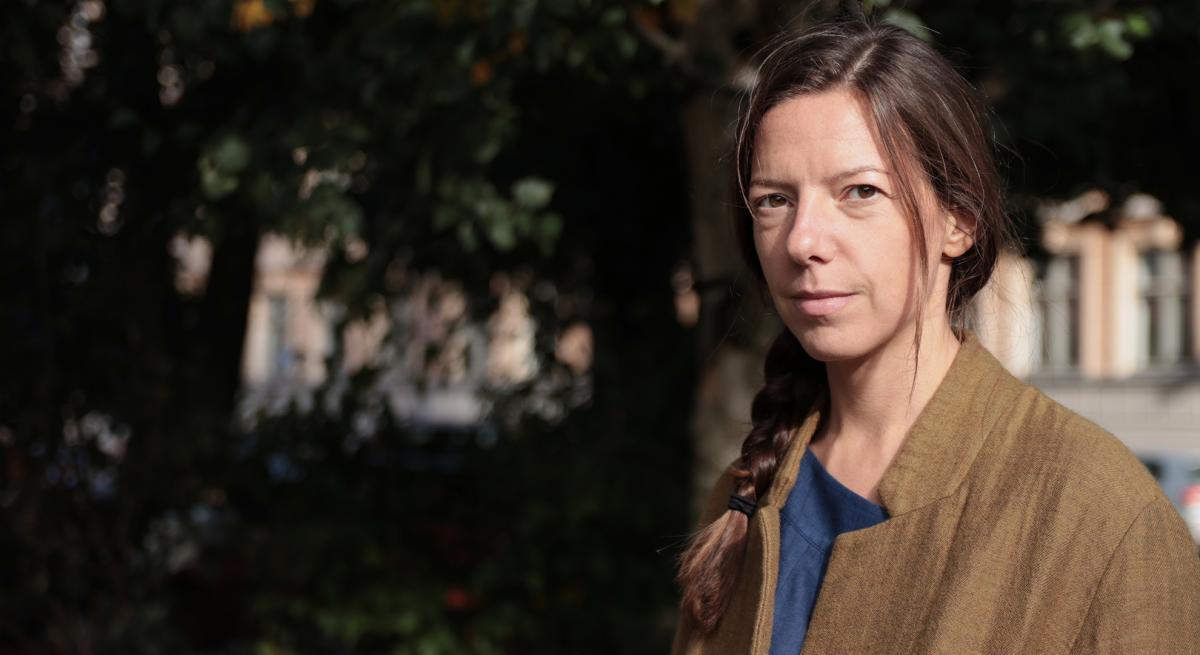Resident Fellow Francesca Bertolotti-Bailey is interested in the political imagination of contemporary art institutions
Art institutions were more daring and experimental in the 1960s and the 1970s than they are today, says Francesca Bertolotti-Bailey, Resident Fellow at the Academy of Fine Arts.

If the corporate world first imitates the art world, and the art institutions then follow by imitating the corporate world, who will win?
This is one of the questions explored by Francesca Bertolotti-Bailey, a curator and active agent in the art scene. Bertolotti-Bailey, who was born in Italy and is now based in Britain, intends to find answers to this question in her forthcoming doctoral research.
Bertolotti-Bailey’s research provides a critical history of the leadership and administration of European contemporary art institutions in the past 30–40 years.
Bertolotti-Bailey spends the autumn at the Academy of Fine Arts as Resident Fellow. During the three-month residency, she tries to formulate a well-focused research question out of a very wide-ranging theme that she will then examine in her dissertation.
“In the early 1980s, capitalism started to exploit and imitate certain practices that were common in the world of culture and the arts, such as (digital) nomadism, unconventional employment relations, individuality, and creativity. The goal was to produce added value by making good use of them,” says Bertolotti-Bailey.
At around the same time, art institutions started to imitate the corporate world from a structural and administrative perspective.
“I am interested in finding out how, when, where, and why this took place, and whether it was an equally good idea for the art world to imitate the practices of the corporate world as it was the other way round,” says Bertolotti-Bailey.
Bertolotti-Bailey has worked in the field of contemporary art and in art institutions for around twenty years. Starting out as a student of Art and Cultural Economy, Bertolotti-Bailey has worked as Director of the University of Cambridge’s modern and contemporary art gallery, Kettle’s Yard, coordinated the international productions at the Liverpool Biennial, and served as Editor of the Serving Library art publication.
According to Bertolotti-Bailey, western art institutions were more experimental and daring in the 1960s and the 1970s than they are today.
“It is true, of course, that the times were also different. The early 1980s marked a significant turn when conservative parties rose to power in many countries.”
There was a lot of discussion concerning the roles and policies of art institutions as recently as the 1990s and the early 2000s.
However, these discussions soon died down. According to Bertolotti-Bailey, the situation was affected by neoliberal politics, which brought the ethos of efficiency and profit, familiar from the corporate world, into art and cultural institutions.
“Art institutions continue to talk about politics, ethical choices and radical action, but the way they operate from the inside is very similar to the hyper-capitalist corporate world which they criticise in public.”
According to Bertolotti-Bailey, the gap between words and actions has become pronounced in present-day art institutions. The situation has been made apparent by #metoo, Black Lives Matter, and the environmental crisis, for example.
The question is not only about individual actions such as flying – “art world is profoundly addicted to flying” – or personnel politics, which has left, for instance, the leading positions of art institutions largely in the hands of white men and women.
Bertolotti-Bailey says that the issue is more generally about decision-making processes, administrative structures, empathy, and “the political imagination of institutions. All those things we dream of when we think about politics, governments, and participatory democracy. As well as the fact that we don’t really try to accomplish these things even within the restricted context of our own institutions, where they could actually be implemented.”
Bertolotti-Bailey wonders what would happen if the gap between words and actions was not as wide as it is today. Would art institutions have more power and influence in society, and if they did, what would that amount to?
“I don’t believe that individuals can move mountains, but institutions, governments and the legislation can. Culture and art can change society, and it is the art institutions’ responsibility to be at the vanguard of these developments.”
The Resident Fellow programme is a part of a joint project of Uniarts Helsinki’s Academy of Fine Arts and the Saastamoinen Foundation that fosters dialogue between teaching in fine arts and the international art community. The programme is aimed at international artists and researchers, who are invited to the Academy of Fine Arts to inspire its teaching activities and to raise students’ awareness of the diverse range of artistic practices and cultures.
Silja Ylitalo